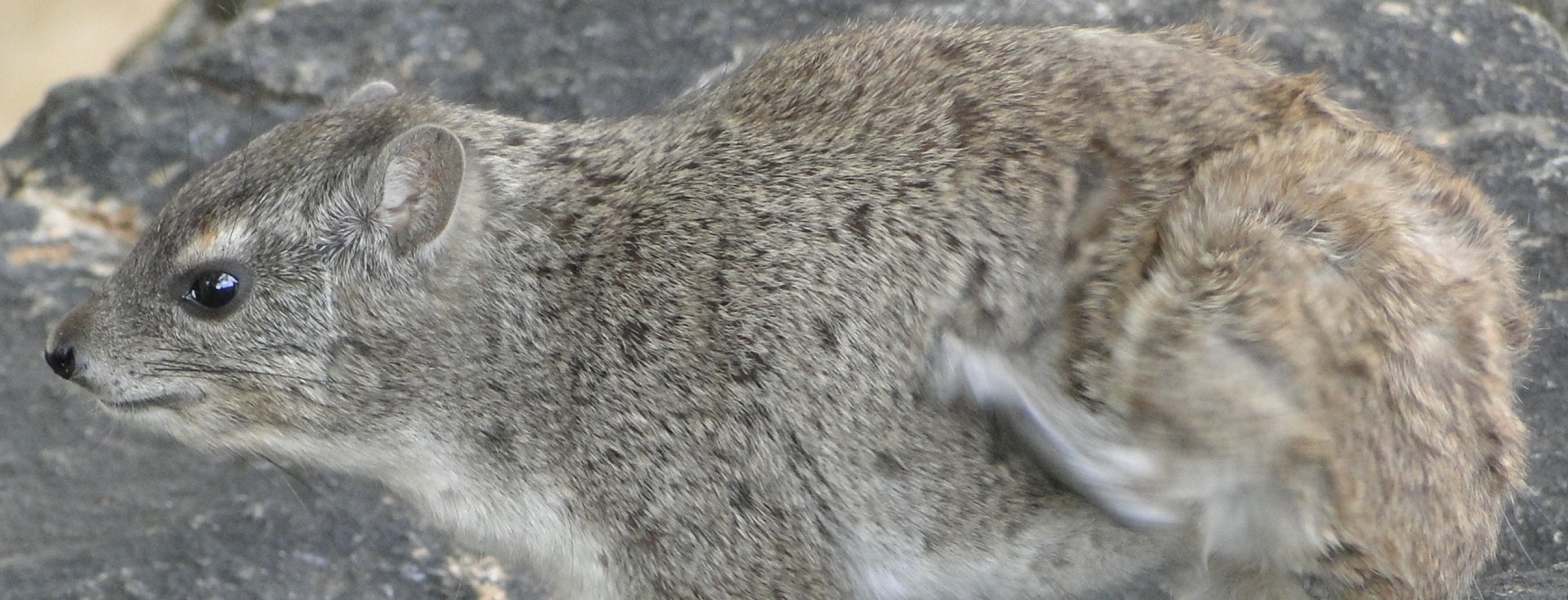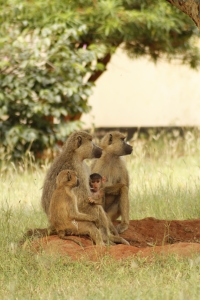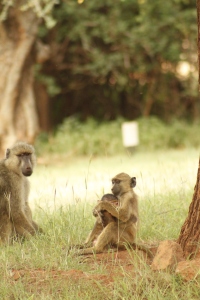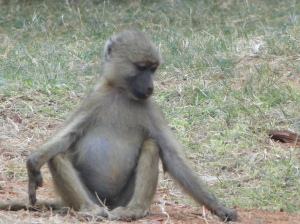Yellowish brown body hair, black face and pinkish sitting pads (Ischias callosities), standing at 84cm for males and 60cm for females, averagely, with life spans of 20 to 30 years and with four very close ‘cousins’. The yellow baboon is one of those iconic species I encountered within my short period at Tsavo East National park. Why I call them iconic is because of their very unique social behaviour which was intriguing and similar to that of humans, after observing them for quite some time although not enough, they are our ‘relatives’ though, hence the resemblance. With 5 species of baboons I choose the yellow baboon as their representative.
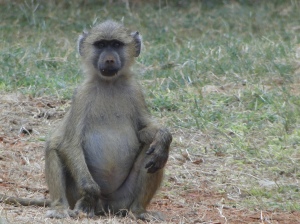
Generally, baboons mostly live in groups, very rare to see a loner unless chased out of a group, the groups consisting of males, females and children. Their hierarchical travelling system leads with a male, the dominant alpha male, to be precise, females and children stay in the middle, safe from any unwanted danger, the less dominant males or soldiers lead from behind. These soldiers will be the first to attack any predator that may cause harm to the group and are always ready to fight to their death.
Their grooming behaviour is also very fascinating, though seen in all primates. How they pick ticks or external parasites is always fun to watch especially how thorough they are.
Importance of baboons includes:
~ They are prey for large predators such as lions, leopard, hyenas and us humans.
~ They aid in seed dispersal because of their very distributive/ messy foraging habits enabling continuance of various plant species indifferent areas as they are highly opportunistic eaters and will eat almost any food they come across.
~ They are also predators for smaller animals and their young, since they are omnivores feeding on hares, vervet monkeys, birds and small antelopes such as dik diks, hence regulating populations of this species.
Unlike other primates, baboons can live in about any ecological niche especially regions which with human settlement making them very successful primates as they are not listed in the IUCN endangered or threatened categories such as lemurs, galagos and colobus monkeys.
Baboons have although been considered as pests by humans as they raid their farms especially before harvesting and other destructive behaviours such as storming households. This has led to various extermination projects.
Us as humans should instead analyse on why baboons are destructive to ‘our’ human settlement. This destructive behaviour maybe/is a result of our own destructive behaviour of destroying their natural habitat leading to baboons migrating to ‘our’ areas. Therefore, we should strive to protect their habitats too; this would be a much easier way of ‘exterminating’ them from ‘our’ human settlement reducing human wildlife conflicts.
